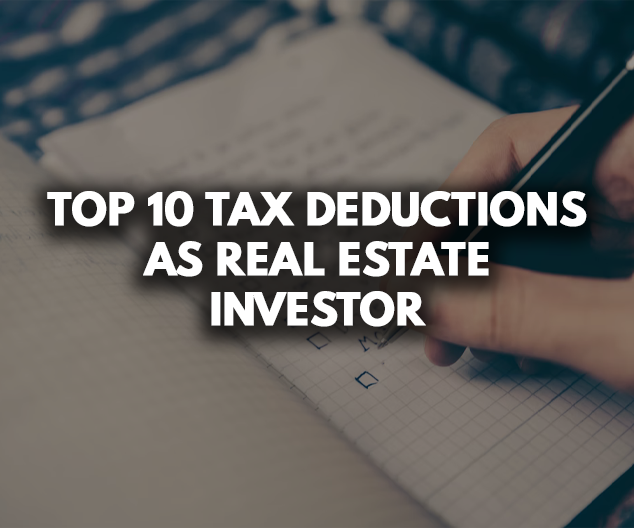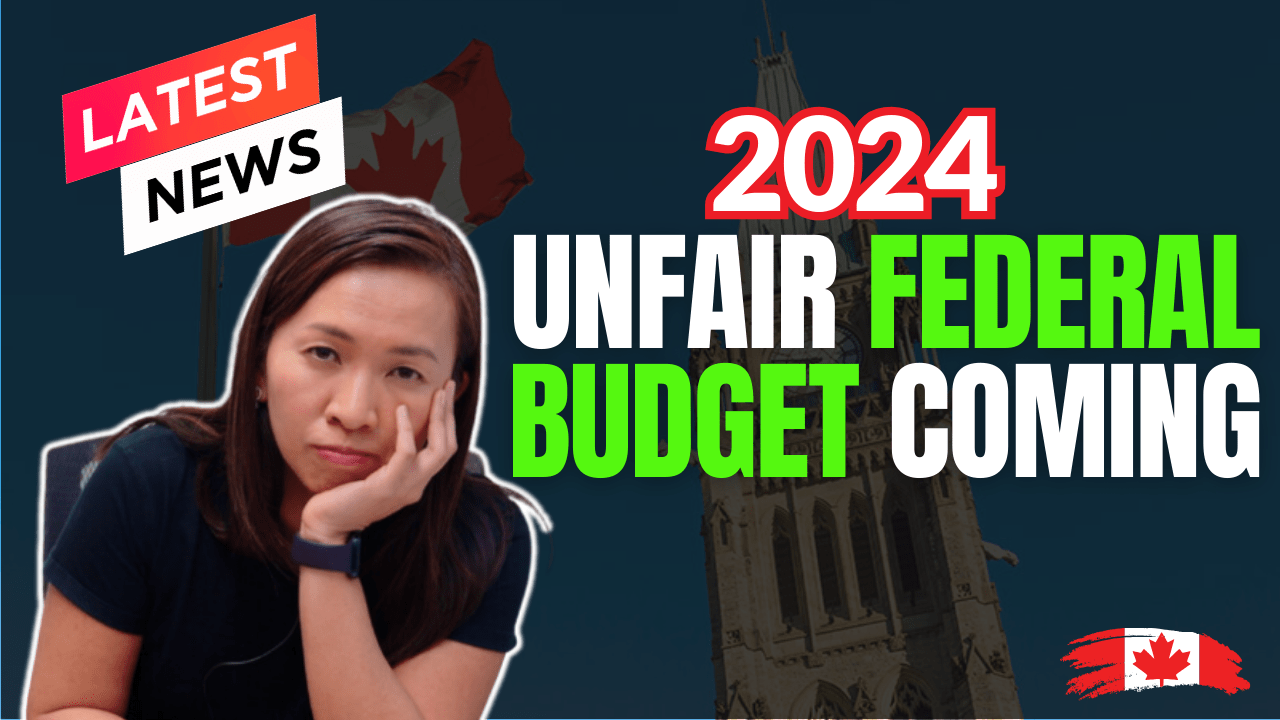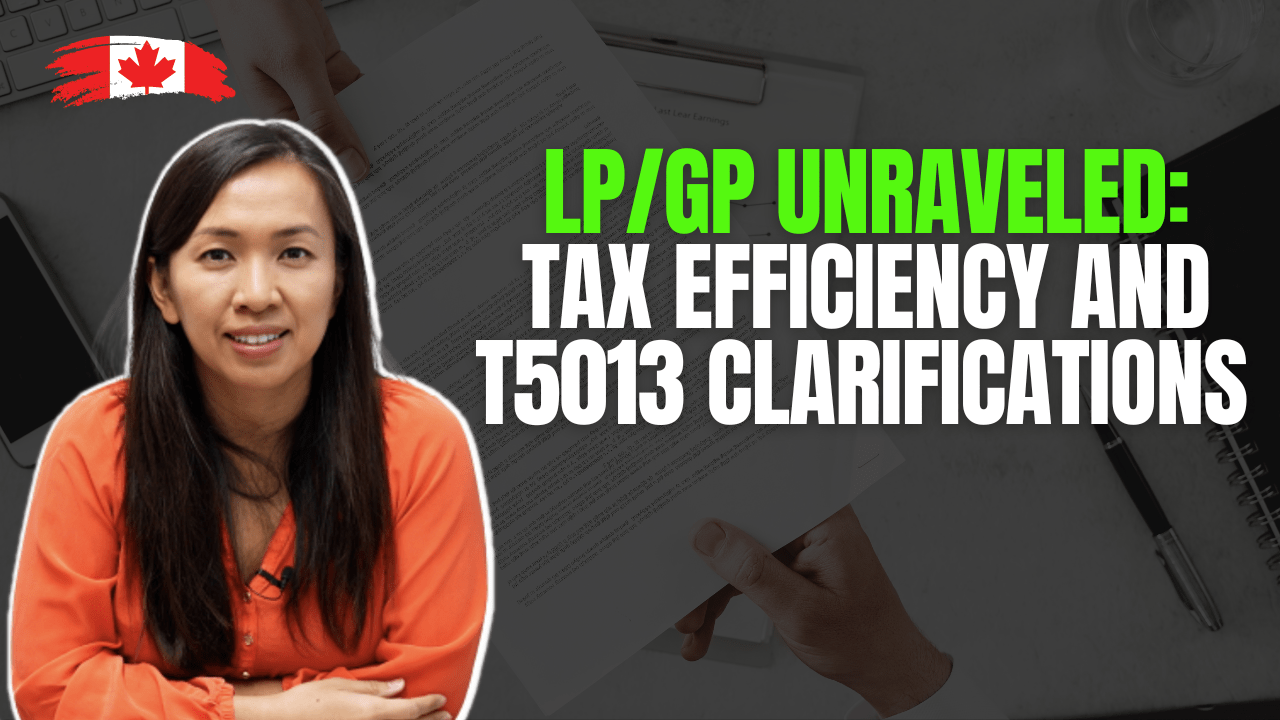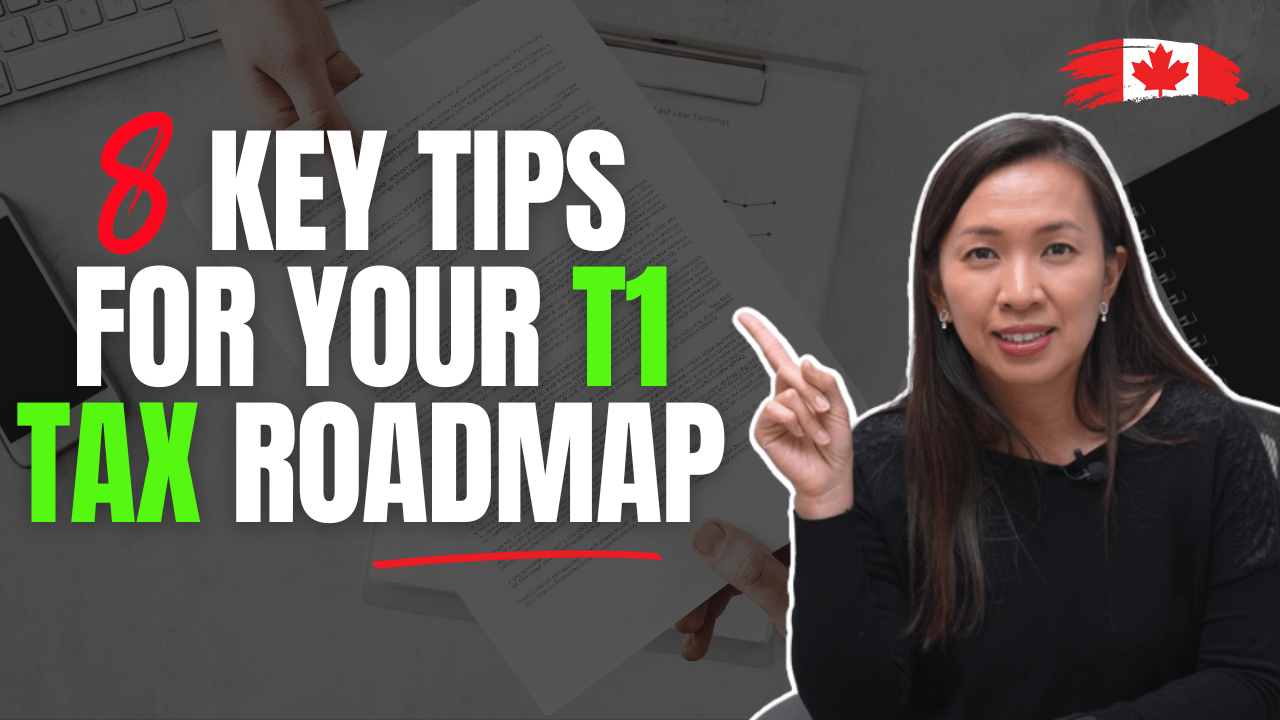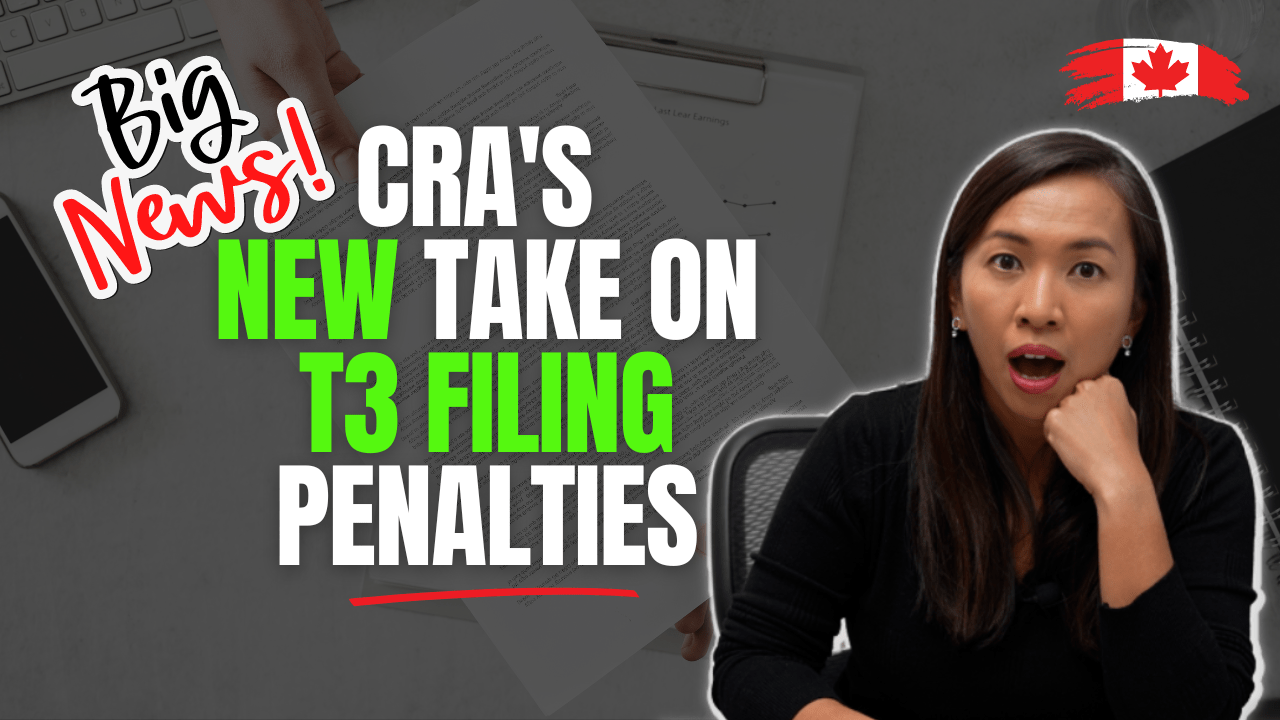Can you believe it’s November already?
Our team is preparing for tomorrow’s client only webinar to go through our bookkeeping procedures with clients.
It got me thinking, we should reiterate with everyone what real estate investors can deduct against their rental income.
Watch today’s video on the top 10 tax deductions you shouldn’t miss as Canadian Real Estate Investors.
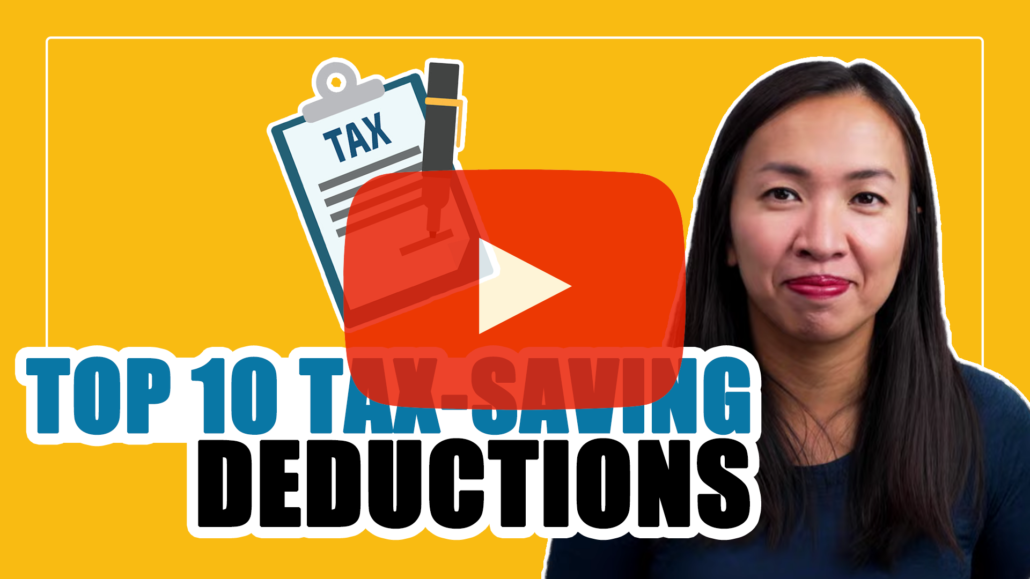
- General deductibility rule
Canadian Income Tax Act allows Canadian taxpayers to deduct reasonable expenses that incur for the purpose of earning business income or property income, subject to a bunch of exception.
This means that as long as you’re able to establish the cause-and-effect relationship between incurring the expenses and earning the particular stream of income, you can potentially deduct the expense.
Next time, when you are incurring an expense that helps you earn your property income, make sure you keep the receipt.
Compile all of them and have a conversation with your accountant at year-end to see if you can deduct these expenses.
- You gotta earn your deduction
I always mention in my blog that in Canada, you gotta earn your deduction.
This means that, as a minimum, you need to keep receipts to support your expense deduction.
If you have a tenant who failed to pay you, make sure you have written confirmation email done to chase him/her for payment.
This also means that if you pay cash to a contractor and never receive the receipts, chances are, the deduction won’t pass through a CRA audit.
As a word of caution, credit card statement and bank statements are generally not sufficient to substantiate your claim.
- Sample of direct expenses incurred for your property
Based on the general deductibility rule, here’re the most incurred expenses that real estate investors incur to earn property income.
These include but not limited to the following:
- Mortgage interest
- Property tax
- Utilities
- Insurance
- Property management fees
- Everything you think it helps to earn rental income (within reasons)
Make sure you keep the mortgage statement, property tax bill, utility bills, insurance policy, invoices, etc. to support your deduction.
- Finance charge
Finance charge are the cost that you incur to secure the mortgage on your investment property to allow you to earn rental income.
Some common examples of finance charge include mortgage insurance and its provincial sales tax that you paid and mortgage broker fees.
Mortgage insurance and its provincial sales tax are typically added toward your mortgage amount at closing. You pay for this expense as part of your monthly mortgage payment.
Lender fees and mortgage broker fees are typically one time expense that you pay out of your pocket at the time of closing.
Finance charge can be deductible over 5 years regardless of when you pay for it.
Sometimes, they are not picked up as an expense deduction against income as they only show up at your closing documents.
- Line of credit interest
Many of our clients start investing by tapping into the equity accumulated in their own primary residence.
They borrow against the primary residence to pay for the down payment of the rental properties that they purchase, and some may use the line of credit to finance the renovation as well.
Whether the borrowing is in the form of line of credit or mortgage, the interest related to the portion that you use to earn investment income is generally tax deductible.
Make sure you keep the documentation of cash transfer, payment, etc. so that you can earn your interest expense deduction!
- Auto mileage
Going back to the same general deductibility rule, if you drive your car to manage your rental portfolio, you’re eligible to claim the business portion of your motor vehicle expenses.
This includes the following:
- Gas
- Auto insurance
- License and registration
- Maintenance and repairs
- Other costs such as CAA, 407 ETR
- Interest expense on car loan
- Parking (directly incurred for the purpose of earning income) and it is 100% deductible
- Capital cost allowance (deduction against your car purchase)
or
- Monthly lease payment
And yes, this means that you must keep the receipts of all these expenses.
On top of it, you are also required to keep a logbook to keep track of the business mileage you have incurred.
Say if you incur 6,000km to manage your properties during the year, and you drive 10,000km the entire year, 60% of all automobile expenses are tax deductible, subject to some restrictions.
For those investors who love to track everything electronic, Quickbooks Online app and MileIQ are some common apps used in the marketplace to assist investors and business owners to track their mileage.
- Home office expense
If you happen to use your home for the purpose of running your rental portfolio, you can deduct a portion of your home against your income.
This means that you get to deduct the business portion of:
- Primary home mortgage
- Primary home insurance
- Primary home utilities
- Primary home internet
- Primary home maintenance & repairs
- Primary home property tax
You are required to keep all the receipts and documents to support your claim.
On top of that, you’re required to keep a copy of your floorplan and the area that is designated as the office space to manage your property.
Say, you have a 1,000 sf house and you use one of the bedrooms that is 100 sf as the designated office to manage your rental portfolio, 10% of all the expenses mentioned above are tax deductible.
A word of caution though, if you use your home for employment purpose and rental purpose as well, claiming additional home office expense against your rental properties can potentially affect your claim as primary residence.
Make sure you speak to your accountant before making this claim to understand the pros and cons.
- Membership/Education
I am a big believer in training and getting coaching. I believe that we can avoid many mistakes that other people made in their journey by having someone guide us through.
Real estate education and meetup are very commonly held in the Southern Ontario area.
Some of these cost a couple hundred dollars a year. Some cost tens of thousands of dollars.
Based on the general deductibility rule mentioned above, as long as investors can establish a cause and effect relationship between paying for these education and membership charges to earning rental income, they have a case to deduct the expenses.
This goes back to how fast the investors take action after they take the education course. If they spend $10K to learn how to invest in real estate, but do not make take any action for a couple of years, it is challenging to convince CRA that there’s a cause and effect relationship between incurring the expense and earning the rental income.
Typically, a real estate investment takes a year or two to stabilize and show net rental income. When an investor deducts tens of thousands of educational cost and does not show sufficient income, the deduction may trigger a CRA audit.
Bottom line, they are deductible provided that you can prove the cause and effect relationship. You might just have to deal with the increase risk of being audited if the expense is high.
CRA also allows investors to claim the wear and tear of the building as a tax deferral called capital cost allowance (CCA).
Capital cost allowance is calculated as a percentage against the building cost.
Similar to RRSP contribution, claiming CCA is a tax deferral, not a tax deduction.
With RRSP contribution, the year you make the contribution, you don’t have to pay taxes on the amount you contribute. But the year you withdraw from your RRSP, the withdrawal amount has to be taken back to income.
With CCA, the year you claim CCA against your rental income, you don’t have to pay taxes on the net rental income. The year you sell the rental property, you have to take all the CCA you’ve claimed over the years as income.
Make sure you watch our Youtube video to get a better understanding of what it is and how it works.
- Repairs and maintenance
Repairs and maintenance that are incurred as a result of the day to day maintenance and rental operation without improving the property life can typically written off against the rental income.
Renovations or capital improvements that are incurred to improve the property life cannot be written off against rental income. They cannot be written off as an expense immediately against your rental income. These capital improvements are added to the cost of your building.
They can be claimed as capital cost allowance (CCA) and added to the cost base of your building, which eventually claim against the sale price your property when you sell.
But… the capital gain on sale of rental properties is 50% taxable, whereas rental income is 100% taxable. When an expense is considered capital improvement, it means that the capital improvement is only 50% deductible.
Logically, many investors would prefer to argue that an expense is repairs & maintenance, rather than a capital improvement.
The line drawn between these two concepts is fussy and there’re frequent court cases about the determination between these two.
Typically speaking, if your expense is incurred to upgrade/improve the property, it’s considered capital improvement. For example, replacing carpet floor with hardwood floor is considered capital improvement. Replacing carpet floor with the same quality of carpet is considered repairs.
There’re some exceptions though…
One exception relates to a common investment strategy called BRRR (Buy, Renovate, Rent, Refinance).
The idea is to buy an older house, do a bunch of renovation to upgrade the value, get the best tenants in and refinance with the banks to pull out initial capital.
When you purchase an older house with the intention to renovate to get the property ready for rent, the expenses you incur to get the house ready for rent are typically considered capital improvement.
Similarly, when you spend money to freshen up the house to get it ready for sale, the expenses that you incur to get the house ready for sale are also considered capital improvements. They are added to the cost of your building and deducted against the sale price to lower your capital gain tax.
Hopefully this provides some pointers for you when you get ready for next year.
Until next time, happy Canadian Real Estate Investing.
Cherry Chan, CPA, CA
Your Real Estate Accountant
